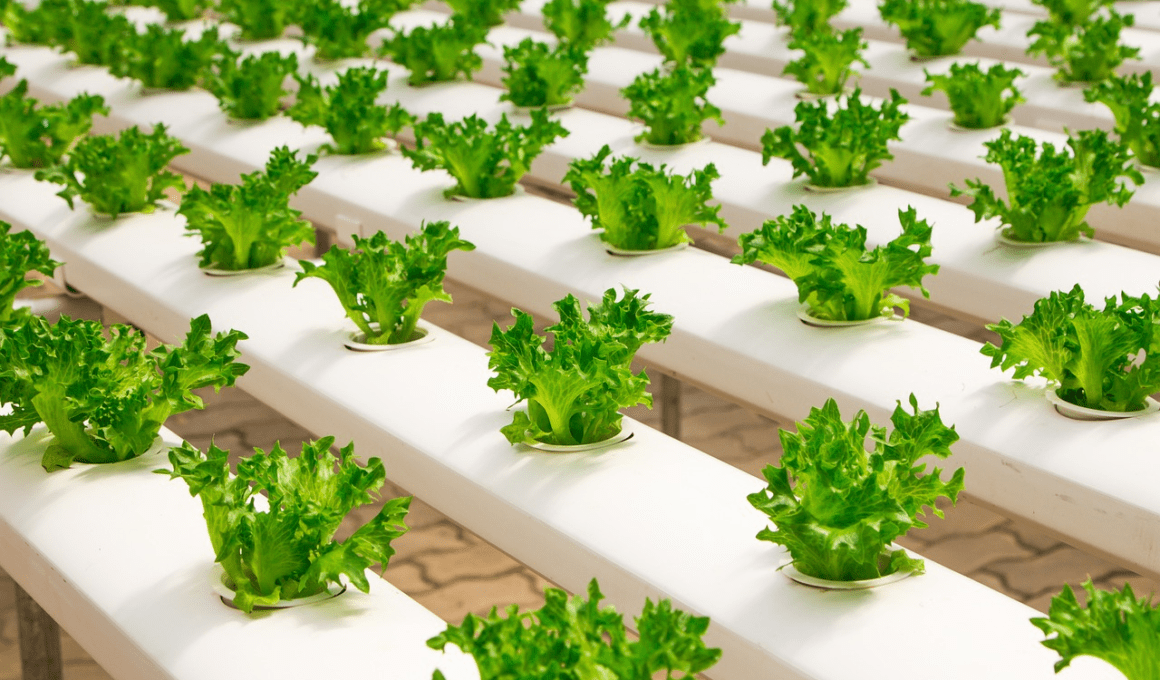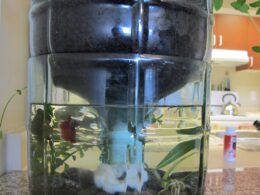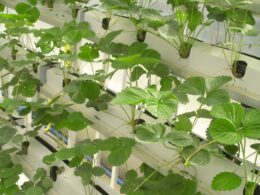Are you tired of seeing brown, lifeless roots in your hydroponic garden? Root rot can be a frustrating and discouraging issue for novice gardeners. It is caused by fungus, bacteria, and algae in the water supply, with Phytophthora being the main culprit. This fungus can quickly spread to other plants in the same nutrient solution, leading to a failed crop.
But don’t worry, there are steps you can take to prevent and fix root rot in hydroponic gardening.
In this article, we will provide you with tips for stopping hydroponic root rot and achieving success in your future crops. We will start by discussing preventative measures, such as maintaining proper nutrient and pH levels and ensuring good ventilation.
Then, we will cover ways to fix root rot, including removing affected plants, sterilizing equipment, and treating the water supply with hydrogen peroxide or other anti-fungal agents.
Additionally, we will provide some general tips for successful hydroponic gardening, such as monitoring plant growth and regularly cleaning and maintaining your system.
With these tips, you can ensure a healthy and thriving hydroponic garden.
Quick Takeaways
- Root rot is the leading cause of brown roots in hydroponics and is caused by fungus, bacteria, and algae in the water supply.
- To prevent root rot, maintain proper pH and oxygen levels in the nutrient solution, keep the temperature around 70°F, follow strict sanitation and maintenance practices, and use beneficial bacteria in the nutrient solution.
- Kratky and Deep Water Culture hydroponic systems are more susceptible to root rot, and young plants are more vulnerable than mature ones.
- If root rot is detected, turn off the flow of nutrient solution, inspect and remove dead or diseased plants, wash healthy plants, clip off bad roots, drain and rinse the system, and add a new nutrient solution.
Preventing Root Rot
To prevent root rot in your hydroponic garden, you should focus on maintaining the optimal levels of pH and oxygen in the nutrient solution. Keep the pH level between 6.0-6.5, which you can test daily and adjust with acid or base amendments as needed.
Additionally, make sure that the temperature of the water stays around 70°F, as warm temperatures can increase the risk of pathogen growth. Using a hydroponic chiller can help maintain cool water temperatures.
It’s also important to practice strict sanitation and maintenance practices to prevent root rot in your hydroponic garden. Remove any dead plant matter or trim dying foliage, and eradicate flies or gnats from the hydroponic room.
Inspect and clip unhealthy or overgrown roots, and add beneficial bacteria to the nutrient solution to help keep the water clean and free of harmful pathogens. By following these tips, you can prevent root rot and help ensure the success of your hydroponic garden.
Fixing Root Rot
If you detect root rot in your hydroponic system, it is important to turn off the flow of nutrient solution and remove any dead or diseased plants immediately. This will prevent the spread of the fungus and save your healthy plants from becoming infected. Once you’ve removed the affected plants, it’s time to fix the root rot and prevent it from happening again in the future.
To fix root rot, you will need to drain and rinse your hydroponic system thoroughly. This will remove any contaminated water and debris that may be harboring the fungus. Then, you can clip off any bad roots and wash the healthy plants before adding a new nutrient solution to the system. To prevent root rot from returning, it’s important to maintain proper pH and oxygen levels, keep the temperature around 70°F, and follow strict sanitation and maintenance practices. Check out the table below for a quick reference guide on how to fix and prevent root rot in your hydroponic system.
| Step | Action |
|---|---|
| 1 | Turn off nutrient solution flow |
| 2 | Remove dead or diseased plants |
| 3 | Drain and rinse hydroponic system |
| 4 | Clip off bad roots |
| 5 | Wash healthy plants |
| 6 | Add new nutrient solution |
| 7 | Maintain proper pH and oxygen levels |
| 8 | Keep temperature around 70°F |
| 9 | Follow strict sanitation and maintenance practices |
Hydroponic Gardening Tips
You can achieve success in hydroponic gardening with experience and knowledge. One of the best tips for success is to start small and gradually expand your garden as you gain confidence. Begin with a simple hydroponic system and a few easy-to-grow plants like lettuce or herbs.
As you learn more about nutrient solutions, pH levels, and temperature control, you can experiment with different crops and systems. Another important tip for hydroponic gardening is to stay consistent with maintenance and sanitation practices.
Regularly inspect your plants for signs of disease or pests, and remove any dead or dying foliage. Keep your hydroponic system clean and free of debris, and sanitize your tools before and after use. With patience and dedication, you can create a thriving hydroponic garden and enjoy the benefits of fresh, healthy produce year-round.
Frequently Asked Questions
Can root rot in hydroponics be prevented without the use of chemicals?
Yes, you can prevent root rot in hydroponics without chemicals. Keep pH and oxygen levels in check, maintain cool water temperature, sanitize often, trim unhealthy roots, and add beneficial bacteria to the nutrient solution.
How often should the nutrient solution be changed to prevent root rot?
Change the nutrient solution every 1-2 weeks to prevent root rot in hydroponics. Regularly test and adjust pH levels, maintain cool temperatures, and sanitize equipment to keep plants healthy. Follow these easy steps to keep your plants safe.
Are there any natural remedies for root rot in hydroponics?
Yes, you can use natural remedies to prevent root rot in hydroponics. Try adding cinnamon, hydrogen peroxide, or a diluted chamomile tea to your nutrient solution. These natural options can help kill harmful bacteria and fungi.
Can root rot affect the taste and quality of the plants?
Yes, root rot affects the taste and quality of plants. It causes brown, slimy, and mushy roots with a strong odor of decay. Prevent it by maintaining proper pH and oxygen levels, and follow strict sanitation and maintenance practices.
How can I tell if my hydroponic system is at risk for root rot?
To tell if your hydroponic system is at risk for root rot, look for brown, slimy, and mushy roots with a strong odor. Prevent it by maintaining proper pH and oxygen levels, cool temperatures, and good sanitation practices.
Conclusion
Congratulations! You now have the knowledge to prevent and fix root rot in your hydroponic garden.
Remember to keep your nutrient solution clean and well-aerated to avoid the buildup of harmful bacteria and fungi. Use sterilized equipment and keep a close eye on your plants for any signs of disease.
If you do notice root rot, don’t panic. Take immediate action by removing the affected plants and cleaning your system thoroughly. Use beneficial bacteria and fungicides to prevent further spread of the disease.
With these tips, you can ensure a successful and healthy hydroponic garden. Happy growing!









